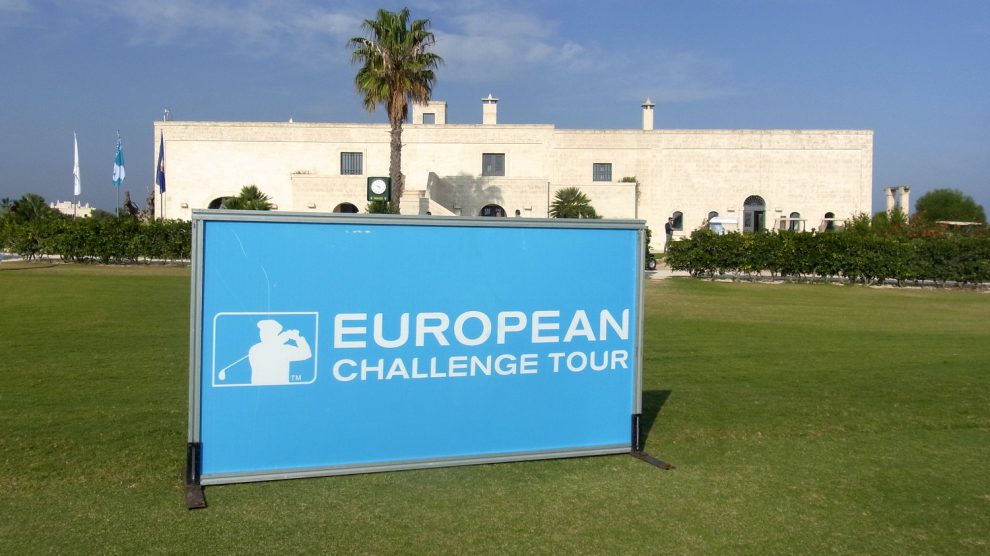It is a curiosity that Americans have helped make the Challenge Tour - the European Tour’s equivalent to the Web.com Tour - what it is today.
Because although it has always been a breeding ground for future stars of European golf - the likes of Thomas Bjorn, Henrik Stenson, Justin Rose and Ian Poulter are graduates - there was often a lingering sense that a season on the Challenge Tour was a year of treading water; that it was somewhere to hang out until Q-School came around again.
But increasingly that is not the case, with Peter Uihlein and Brooks Koepka at the forefront of this subtle change, one which allows Europe’s second tier to be viewed as an opportunity rather than a penance.
Koepka, in particular, can be seen as the perfect example of how the circuit can broaden a player’s outlook and sharpen his game.
At the tour’s Montecchia Open last week, a huge image of the Florida native stood in the clubhouse, where he lifted the trophy after completing the second of his four wins at this level during the 2012 and 2013 seasons.
It was a reminder for the field of what can be achieved in a short space of time: Koepka has subsequently become a winner on the European Tour, followed that with victory in last year’s Waste Management Phoenix Open and currently resides in the world’s top 20.
As does Branden Grace, the South African who has seven European Tour titles to his name and recently added the RBC Heritage at Harbour Town. A regular contender in the majors last year, Grace was, however, unable to clinch victory at Challenge Tour level and in two years never once finished inside the top 15 in the end of season rankings.
That’s how tough the Challenge Tour has become, and yet, paradoxically, it is also why those who graduate frequently find themselves well equipped for the highest level.
It’s a tough place to learn the tour trade. They travel to oilfields in Kazakhstan and safari parks in Kenya, through deserts in Egypt and Oman, to castles in Ireland and stately homes in England.
But there is fun to be had too. The players are in it together: bus loads of golfers, crammed in with their bags, bumping along rutted roads; staying at hotels in the back of beyond; hitting balls on ranges that may be little more than scrubland.
Equipment trucks, generous reps, hotel gyms, adoring crowds, hangers on and other fripperies of the highest level are rare.
Very rare.
It tests the golfer, questions his commitment and desire. He learns to fight for what he wants. It hardens some and breaks others.
Put simply: If a player can get over the challenge of the Challenge Tour and he'll learn lessons about himself that will be invaluable for the future, sometimes in ways he might never have predicted.
Koepka, for example, once found himself being driven round Kenya at 3 a.m. by a taxi driver whose motives were unclear.
What should have been a 15-minute transfer to the hotel became a three hour mystery trip through back streets and wasteland. Koepka freely admitted to being “a bit freaked." He also finished fifth that week and left describing Kenya as “awesome." Such contrasts of emotions are typical of Challenge Tour life.
England’s Ashley Chesters, a rookie on the Tour this season, briefly contended in last year’s Open Championship as an amateur. He went to Q-School in November excited about making the European Tour, but finds himself on the Challenge Tour instead.
There is obviously some frustration at that situation, but he’s also smart enough to see the wider picture.
“If you make it at this level, you’ll make it at the top, that seems to be proved every year when you see graduates go on to better things,” he said in Montecchia. “It’s a great place to get tournament ready for the higher levels. I’m definitely building foundations for the future.”
The strangest fact about the Challenge Tour? Phil Mickelson is a past winner on it.
Stranger still? He did so at EuroDisney, back in 1993.
It’s a mad, mad world and the Challenge Tour likes it that way.

